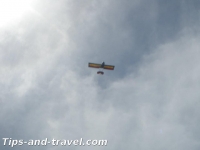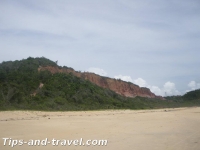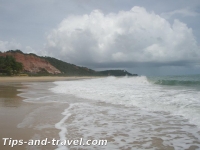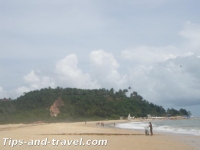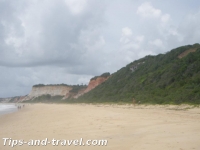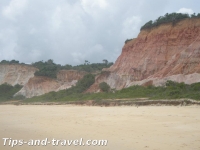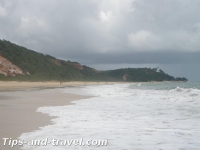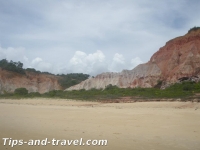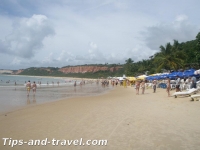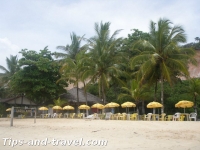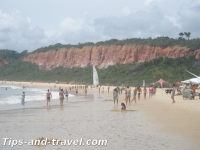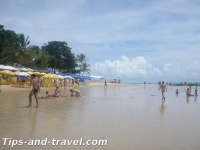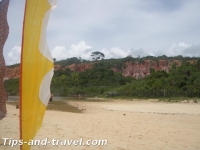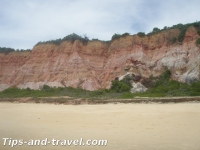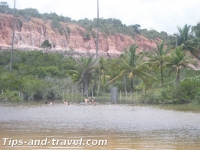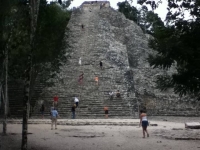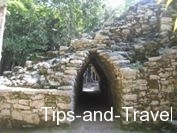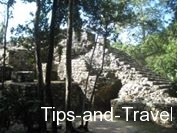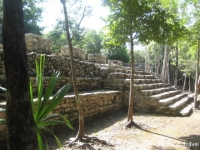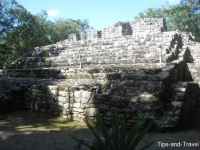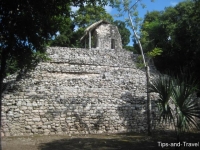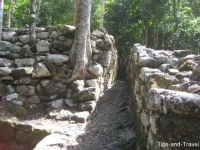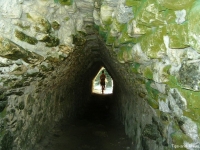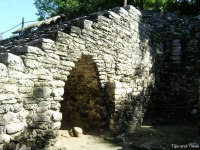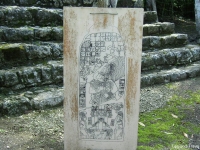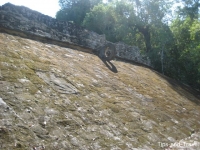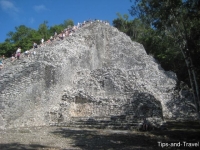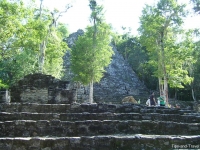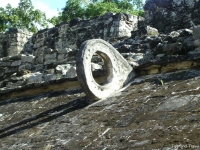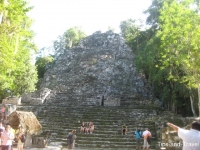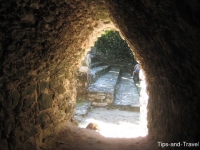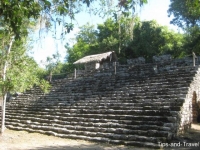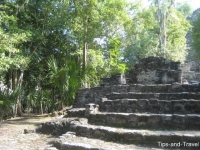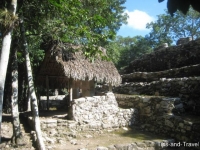Coba is an important archaeological site belonging to the maya civilization. It is located in the Yucatan Peninsula, to the southeast of Mexico (Quintana Roo State) in the small village of Coba, 106 kilometres of Playa del Carmen and 42 km from Tulum. The city stretched over 70 square km and had a network of 45 trails that allowed to circulate between the different sets, but also to travel to the satellite sites. Traces of low platforms and constructions of wood and palm and the dating of the oldest ceramics indicate that the site was inhabited as early as the 1st century BC, but most of the monuments were constructed during the classical era of the maya civilization (500-900 AC). The presence of 5 small lakes has been particularly conducive to the development of the city in providing water for the many inhabitants and facilitating activities, including agriculture. The city was structured into different sets that not only had a chronological relationship between them but also an urban relationship. Thus there are groups almost exclusively residential (Group Coba) and other with ceremonial or funeral functions (Macanxoc group). The site is located in the forest, in a wild and natural location giving the visitor the feeling of being an explorer. Just a part is accessible to the public. There is a temple of 25 metres in height (the Church), a set of palaces and residences. There is also the place of the ballgame with some engraved representations and also a foundation, decorated with engravings, representative human skulls and characters on the edges of the stairs. The temple of Nohoch Mul, with its 30 metres, is one of the highest pyramids of the maya region. On its Summit there is another temple (subsequently built), giving 42 metres above sea level. In this group, we find a residential construction; structure X, which can also be visited. There are also other more recent constructions than the ancient temple buildings.
Tips
As the distance to be covered in the site is large enough, you can do it by bike or you can also be transported by a tricycle paying a fairly reasonable price.
If you decide to do it on foot, you can observe the fauna and flora of the place.
The site is open every day of the year from 8:00 to 17:00 and you will also find guides who speak several languages.
In the village of Coba, you will find a few places to take a snack or buy some souvenirs.

